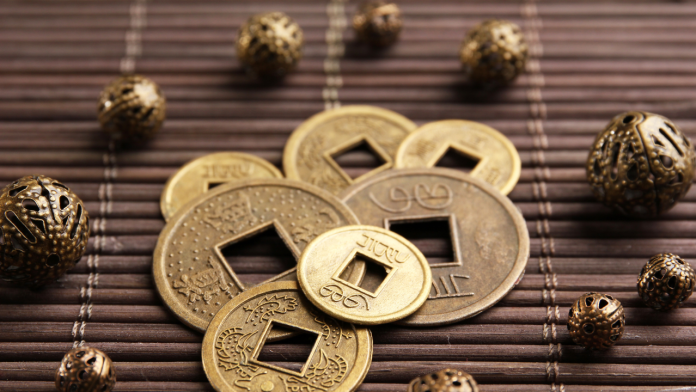Bronze sculptures in ancient India represent a profound and captivating aspect of the country’s rich cultural heritage. These intricate works of art have not only stood the test of time but also continue to mesmerize art enthusiasts, historians, and tourists from around the world. In this article, we will delve into the world of bronze sculpture in ancient India, exploring its historical significance, craftsmanship, iconography, and the enduring legacy it has left.
The Significance of Bronze Sculpture in Ancient India
It played a pivotal role in the artistic and religious expressions of ancient India. The skillful craftsmanship involved in creating bronze sculptures allowed artists to depict various deities, mythological figures, and scenes from epics with extraordinary precision. This art form became a medium to convey spiritual stories and connect people with their divine beliefs.
Historical Background
The tradition in India dates back over a millennium, with its origins traceable to the Indus Valley Civilization. However, it reached its zenith during the Chola dynasty, around the 9th to 13th centuries, in the southern part of India. This era is often considered the golden age of bronze casting.
The Chola Dynasty and Bronze Casting
The Chola dynasty made significant contributions to the art. Their patronage and support for skilled craftsmen led to the creation of some of the most exquisite bronze sculptures in history. These sculptures often adorned the interiors of temples and served as objects of veneration.
Iconography in Bronze Sculptures
These sculptures in ancient India were characterized by intricate iconography. Every posture, hand gesture, and facial expression had specific meanings, making it essential to understand the symbolism and mythology behind each sculpture.
Techniques of Bronze Casting
The intricate process involved multiple steps, including the creation of a wax model, casting molds, and the final bronze sculpture. The techniques employed by ancient Indian artisans were highly advanced for their time and contributed to the lasting appeal of these artworks.
Symbolism and Religious Significance
These sculptures carried profound religious and cultural significance. They were not just works of art but instruments of spiritual connection. Each sculpture conveyed the essence of the deity or mythological figure it represented, allowing worshipers to establish a deeper connection with their faith.
Bronze Sculptures in Temples
Temples across India were adorned with these sculptures, often placed in sanctum sanctorums. These sculptures served as focal points for religious rituals and devotion. The artistic beauty of these sculptures made the temples not only places of worship but also centers of art and culture.
Evolution of Bronze Sculpture in India
Over the centuries, these sculpture in India evolved, adapting to changing artistic influences and regional variations. The transition from one dynasty to another brought new styles, resulting in a diverse array of bronze sculptures across the country.
Influence on Southeast Asian Art
The influence of these sculptures extended beyond its borders. Southeast Asian countries, such as Cambodia and Thailand, were deeply influenced by Indian art and culture. This is evident in these sculptures found in temples and museums across the region.
Preservation and Conservation
Preserving these sculptures is of paramount importance. Conservation efforts have been undertaken to protect these invaluable artifacts from the ravages of time and the environment, ensuring that future generations can appreciate their beauty and historical significance.
Notable Bronze Sculptures
Several notable sculptures from ancient India have gained global recognition. These masterpieces stand as testaments to the skill and devotion of the artisans who created them. Some famous examples include the Nataraja statue, the Chola bronzes, and the Dharmachakra Mudra.
Artistry and Craftsmanship
The artistry and craftsmanship involved in creating these sculptures were awe-inspiring. The minute details, intricate designs, and exquisite finishing showcased the dedication and passion of the artisans. The level of precision achieved in these sculptures remains unmatched.
Legacy of Bronze Sculpture in Modern India
The tradition of bronze sculpture in India may have evolved over the centuries, but it continues to be a vibrant part of the country’s artistic heritage. Modern Indian artists draw inspiration from the ancient art form, infusing it with contemporary influences to create unique and innovative pieces.
Conclusion
In conclusion, bronze sculpture in ancient India represents a timeless and captivating art form that has transcended time and borders. Its rich history, symbolism, and craftsmanship continue to inspire and enchant people worldwide. Preserving this heritage and understanding its significance is essential to ensuring that it remains an integral part of India’s cultural tapestry.
FAQs
1. What is the oldest known bronze sculpture in India?
The oldest known bronze sculptures in India can be traced back to the Indus Valley Civilization, dating back over 3,000 years. These sculptures provide insights into the artistic traditions of ancient India.
2. Why are Chola bronze sculptures famous?
Chola bronze sculptures are famous for their exceptional craftsmanship and intricate detailing. The Chola dynasty’s patronage of the art form led to the creation of some of the most exquisite bronze sculptures in history.
3. How are bronze sculptures preserved in modern times?
Modern preservation and conservation techniques, including controlled environments and expert care, are used to protect ancient bronze sculptures from deterioration and environmental damage.
4. What is the significance of the Nataraja statue in Hinduism?
The Nataraja statue represents Lord Shiva in his cosmic dance, symbolizing the cycle of creation and destruction. It holds immense significance in Hinduism, reflecting the divine balance in the universe.
5. How has the art of bronze sculpture evolved in contemporary India?
Modern Indian artists draw inspiration from ancient bronze sculpture techniques and iconography, infusing them with contemporary elements to create innovative and unique pieces, ensuring the art form’s continued relevance.



